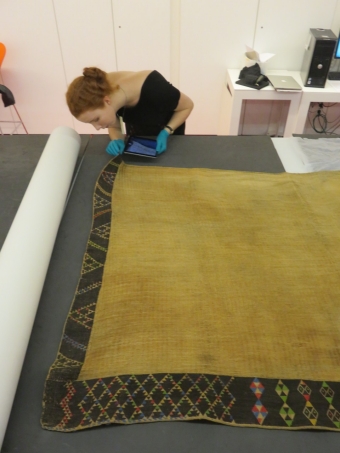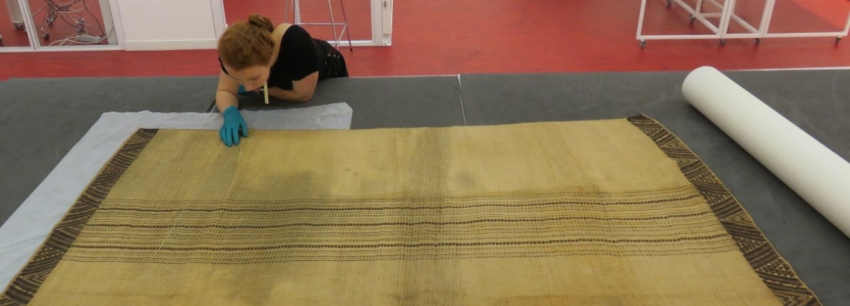Justine Treadwell is studying for a Bachelor of Arts (Honours) in Museums and Cultural Heritage, and recently undertook a research trip to the United Kingdom and Europe to study kākahu (Māori cloaks).
One of the greatest joys of research trips is the holiday that you don't have. When people hear I spent the inter-semester break of my honours year in Europe, they are generously pleased for me and often comment that it must have been nice to have a break.
It really would have been — only the lack of sleep, constant travel and excitement was even better.
This year I am studying towards a Bachelor of Arts (Honours) in Museums and Cultural Heritage, which is a fantastic experience to share with like-minded and supportive peers.
Thanks to the timely introduction of the University of Auckland Postgraduate Scholarships, I was able to pick a topic based almost exclusively on research undertaken overseas, and fund it with my scholarship.
I was also lucky enough that this year coincided with my father's PhD sabbatical, requiring him to travel overseas to do research for his project.
The final piece of luck aligned in our related projects, which involved taonga Māori in British and European collections. Dad needed to see components of eighteenth- and nineteenth-century whare (houses) and I needed to see eighteenth- and nineteenth-century kākahu (Māori cloaks) with tāniko borders.
Our four-week trip covered museums in London, Oxford, Cambridge, Edinburgh, Paris and Florence, and provided the research material for my honours dissertation, due at the end of this semester.
People are often surprised to hear that to study the earliest kākahu in museums, you have to travel overseas. “How many cloaks are in European museums?” is a question I hear regularly, and the answer is: a lot, especially those collected by Captain Cook.
Many museums don't even know how many they have.
The most wonderful people we met on the trip were the collection managers and assistants, who would sometimes devote whole days to helping us, sharing in the excitement of finding a new design or technique, and — to my eternal delight — bringing out kākahu I had never seen or heard of.









